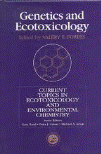Papers in the Biological Sciences

Valery Forbes Publications
Document Type
Article
Date of this Version
5-2009
Citation
Ecotoxicology and Environmental Safety 72:4 (May 2009), pp. 1190–1199; doi: 10.1016/j.ecoenv.2008.10.012
Abstract
Although the polycyclic musk 1,3,4,6,7,8-hexahydro-4,6,6,7,8,8-hexamethylcyclopenta[γ]-2-benzopyran (HHCB) is frequently detected in aquatic sediments, very little is known about its effects on sediment-feeding organisms. Effects of sediment-associated HHCB on growth, feeding rate, survival and reproduction in the gastropod Potamopyrgus antipodarum were measured in the laboratory. Snails were exposed to six nominal HHCB concentrations: 0, 0.1, 1, 10, 30 and 100 μg g−1 dry weight (dw) sediment. Adult survival and growth were not affected by HHCB. However, juvenile growth and survival, reproduction, time to first reproduction and adult feeding rate were more sensitive endpoints and declined with increasing HHCB concentration. Individual-level endpoints for P. antipodarum were integrated into a population model to investigate the effects of HHCB on population growth rate. Under otherwise favorable laboratory conditions, population growth rate was slightly (by ca. 2%), but not significantly, reduced with increasing HHCB exposure concentration. Model simulations were performed to explore the consequences of HHCB exposure under more ecologically realistic conditions (i.e., survival and reproduction of unexposed snails were markedly reduced relative to the laboratory). The results suggest that despite detectable effects of HHCB on individual-level endpoints measured in the laboratory, impacts on population dynamics of this deposit feeder are not likely to occur at environmentally relevant exposure concentrations.
Included in
Environmental Health Commons, Terrestrial and Aquatic Ecology Commons, Toxicology Commons


Comments
Copyright © 2008 Elsevier Inc. Used by permission.